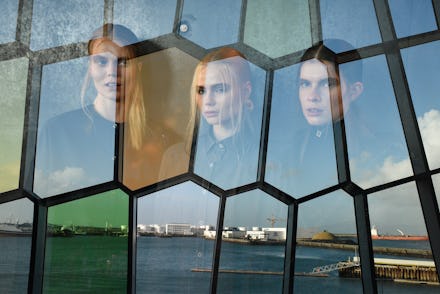What Iceland Did to Become the Most Feminist Country in the World

By almost every metric, Iceland is the most feminist country in the world.
Just take the recent example of when the country embraced the #FreeTheNipple movement, when outraged feminists across Iceland, men and women alike, took to Twitter to defend a young Icelandic woman who received vicious social media backlash for posting a topless picture of herself in response to a male friend who had done the same.
The original effort, and the movement that followed, were attempts to desexualize breasts in the fight for gender equality. The people of Iceland took the idea to its fullest.
But, Iceland's embrace of the #FreeTheNipple movement should not be a surprise considering the country's impressive track record of forward-thinking and feminist proclivities. When the World Economic Forum released its 2014 Global Gender Gap Index late last year, it ranked Iceland No. 1 out of more than 130 countries for the sixth consecutive year.
That ranking is an average of a number of specific indices. Iceland ranked first in several categories, including political empowerment, education and equality among professional and technical workers. Even their male-to-female birth ratio is nearly a perfect one.
The numbers just keep getting better. For every man enrolled in university, there are 1.7 women. There are slightly more girls than boys in primary and secondary school, and there are roughly two women for every three men in parliament.
So, how did this happen? Simply put, for more than 150 years, women's equality has been on the forefront of the minds of Iceland's citizens in a number of ways, and it's shown.
Women's rights have been on the agenda in Iceland since 1850.
Iceland became the first country in the world to grant unconditional equal inheritance rights to men and women in 1850. Women's suffrage has also been around for 100 years. Women got the right to vote in 1915, five years before the United States.
Decades later, on Oct. 24, 1975, practically every woman in Iceland protested for economic equality. To make it less daunting to potential participants, the organizers called it "a day off," which also protected women since they could legally get fired for going on strike.
An estimated 90% of women took part in this demonstration, with housewives leaving their homes for the day and professionals not going to work. Women from every walk of life gathered in the capital, Reykjavik, and more than 10% of the national population showed up that day.
The country came to a standstill and the men could barely cope, between child-rearing and work. Suffice to say, it worked. One year later, parliament passed a law guaranteeing equal pay for women.
Women have have been represented in politics.
Only five years after the "day off," in 1980, Iceland elected Vigdís Finnbogadóttir as president, making her both Iceland's and Europe's first female president. She was far outside the cookie-cutter mold of convention, as a divorcee and single mother with an eclectic professional past, including television presenting, being a guide for the Icelandic Tourist Bureau and a member of an experimental theater group.
An extremely popular politician, Finnbogadóttir was re-elected three more times until she finally retired in 1996.
Then, in 2009, Iceland elected the world's first openly gay head of state and their first female Prime Minister, Jóhanna Sigurdardóttir. She also had an unorthodox path, starting as a flight attendant and union official before migrating to politics. She was already in a civil partnership with her wife, Jonina Leosdóttir, (Iceland was also one of the first countries to legalize gay civil unions in 1996) and Sigurdardóttir married Leosdóttir the following year, in 2010, after the PM helped pioneer marriage equality.
Iceland didn't hesitate to institute equal parental leave and make it easy for mothers to work.
In 2000, the country passed passed a law giving equal parental leave: three months for each parent respectively, with an additional three months to split between them. The law was amended in 2012, to a "5-2-5 policy," where each parent is entitled to five months leave with an additional two months to share.
As an added bonus, the Icelandic government pays 95% of kindergarten tuition, which means state-run child care has a 90% enrollment rate for children under the age of 5. And that makes it a lot easier to go to work.
Better together. When men and women have equal rights, there are microbenefits, such as improved family life, and macrobenefits to society as a whole. Not having adequate maternal leave can interfere with basic aspects of parenting like breast-feeding. The NGO Save the Children published a report which stressed the importance of exclusively breast-feeding for the first six months of a child's life; it can literally increase life expectancy.
While domestically the battle against gender equality continues under the guise of "protecting society," whatever Iceland is doing can't be that bad: It is one of the happiest countries in the world.